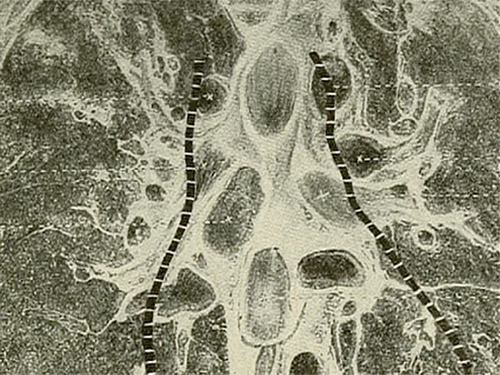Recovery & Community: Featured Graduate Student Work
Multiethnic Digital Humanities in 2022
Featured Graduate Student Work Heading link
Tuberculous Imaginaries

Tuberculous Imaginaries, a museological video art installation, addresses representation in American medicine through the digital manipulation and display of primary materials associated with American tuberculosis research around the turn of the twentieth century. Composed of three video feeds and an informational website, the installation meditates on the human material which grounds modern medical epistemics. This material, which is always pulled from the body of a sick, dying, or dead patient, is the main index from which medicine makes its arguments. Bringing these objects into an open conversation with its viewers Tuberculous Imaginaries displays medical history in ways that are both critical and non-iatrocentric (that is, not dependent on ‘great’ medical scientists and narratives of scientific progress).
Tuberculosis Imaginaries uses public domain materials made available on HathiTrust. By examining and manipulating these digital objects, I attempt to criticize the reproducibility and availability of this material, as it was originally the result of unethical research practices (at least by today’s standards). As Harriet Washington and Michael Sappol (among others) have argued, the bodies of non-white and othered communities have more regularly been the sites of medical exploitation. While the primary objects have been made available and critical arguments have been made from and through these objects, the primary material seems always indebted to medical research’s original sin —the exploitation of the body of a desperate, dying subject.
Tuberculous Imaginaries attempts to address these concerns through an engagement with this contradiction: to work with horrific, unethical primary materials, while at the same time, trying to present them in ways that do not explicitly trade on the posthumous spectacle so common in medical museums.
The Cosmopolitans: Filipino Inter(national) Students and the American Empire in 1917 and 1921
Current scholarship on international students is sparse and tends to focus on contemporary crises and possibilities, but that limited scope neglects the long chronological impact of international students and the importance of the U.S. Empire in the development of international education. My dissertation will use digital humanities tools and historical methods to analyze the significance of international students to American universities. I will use case studies of specific students to balance the long durée and broad geographic scope of my work with the intimate details and everyday struggles of individuals. My dissertation will center the agency of colonial nationals, the development of anti-colonialism, the interpenetration of nongovernmental and state organizations, and the creation of the modern higher education system in the United States with ties to both state and corporate bodies. In this HASTAC project, I have focused on visually representing the data of the Institute of International Education and the 1917 and 1921 cohorts of Filipino students in the United States through mapping on ArcGIS to demonstrate the geographic scope of the international student movement and the change over time in the early to mid-twentieth century.